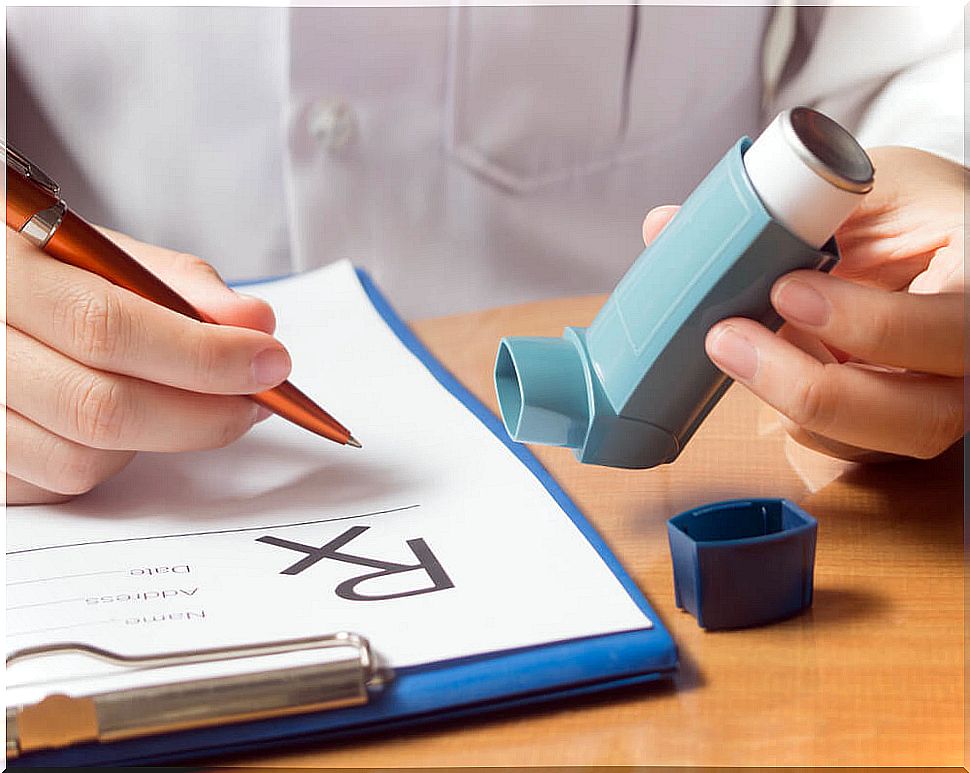Treatment Of Bronchitis
Treatment of bronchitis is symptomatic and, according to the MSD Manual, the prognosis is excellent. On the other hand, he points out that the use of antibiotics is not always necessary.
Bronchitis is a disease characterized by inflammation of the bronchial tubes. Do you know what it is and how it affects the airways? Let’s see more below.
Respiratory system
During respiratory movements, the lungs shrink and expand thanks to the intercostal muscles and the diaphragm. Also, there is a significant change in internal pressure compared to that of the external environment, creating air currents.
On the other hand, our body has a series of ducts or channels through which the air passes. In this way, our lungs are not directly connected to the outside. On inspiration, the air passes from the nasal (or oral) cavity to the pharynx and up to the larynx.
Bronchi
The trachea then bifurcates into two large bronchi (one to each lung) and into bronchioles. Thus, a minimal amount of air comes into contact with the alveoli, where it travels to join the bloodstream. This last process occurs in the case of oxygen, which is coupled to red blood cells.
Instead, during expiration, unabsorbed gases and carbon dioxide are expelled. The latter is a waste substance.
Bronchitis
However, there are pathogens that can accumulate in the bronchi, irritating them and causing an infection. In general, they have a viral or bacterial origin. It can also be due to toxic substances, such as tobacco smoke.
In them, patients experience a series of alterations or discomfort. For example: persistent cough with mucus, pressure in the chest, shortness of breath, rhinitis, etc.
Treatment of bronchitis

A number of treatments have been developed with the ultimate goal of alleviating the patient’s symptoms and neutralizing the infection. However, it is only completed in the case of acute bronchitis (short duration) while during chronic bronchitis it is not completely eliminated (it has a long duration).
Bacterial or viral bronchitis
If the infection has a bacterial origin, the appropriate antibiotics will be administered. These will always be recommended by the corresponding medical team, that is, we must avoid self-medication. Likewise, all the guidelines that the doctor cites (such as the time of ingestion, etc.) must be followed.
On the other hand, if the disease is caused by a virus, drugs cannot be prescribed to neutralize them directly. There are still no chemical compounds that attack this type of pathogens.
Instead, our body is able to adapt and create new specific antibodies that destroy viruses. As a general rule, the patient experiences a great improvement after a week of infection, the response time of our immune system.
Bronchodilators and other drugs
On the other hand, it is worth mentioning bronchodilators. This type of medication increases the diameter of the obstructed bronchi, allowing the patient to breathe more easily. Likewise, its administration must be controlled by the specialists in question.
Your doctor may prescribe a series of drugs to lower your fever if it occurs. These compounds include acetaminophen, ibuprofen, and acetylsalicylic acid or aspirin. However, the use of aspirin is not recommended in children.
Corticosteroids will also be used to control and try to reduce the inflammation of the bronchial tubes. These types of compounds are inhaled according to the guidelines advised by the medical team.
Another group of medications, cough suppressants , reduce the cough reflex in the most severe cases. However, it must be administered under strict control, since if the mucus is not expelled from the ducts, the pathology can be aggravated.
Other tips
The treatment of bronchitis also includes maintaining good lifestyle habits. First of all, it should be noted the importance of maintaining good hydration.
A healthy and balanced diet along with an abundant intake of fluids. Thus, the mucus loses its concentration and its elimination is easier. On the other hand, with a controlled diet we avoid nutritional deficits that could develop other alterations.
The use of oxygen may also be helpful. It is used in the most serious clinical cases, where the patient can barely breathe and feels a constant feeling of suffocation.
Other common recommendations are to avoid tobacco use or environments with a large amount of contamination. This can irritate the airways.
To consider
In the event that another underlying pathology has been detected, the treatment will depend on the problem that has led to bronchitis. For this, it would be necessary to carry out tests aimed at studying the bronchial tree and the thoracic cavity. Sometimes effort measurements are made to measure the expansion of the lungs during exercise.









